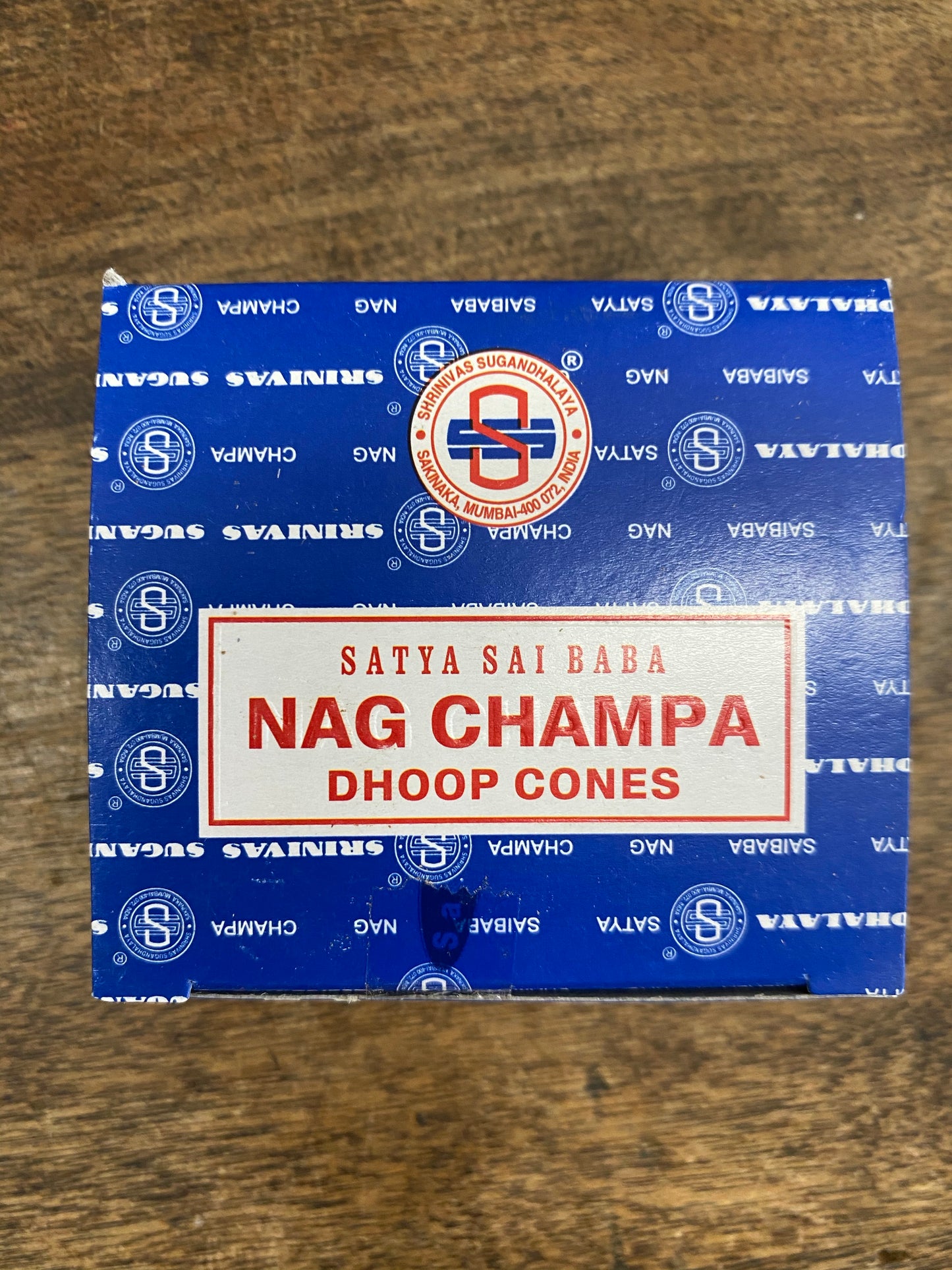Satya
Satya Incense Dhoop Cones 12 cones per box
Satya Incense Dhoop Cones 12 cones per box
Couldn't load pickup availability
Shrinivas Sugandhalaya (BNG) LLP Makers of Satya Incense
Masala Incense: A History
What sets Shrinivas Sugandhalaya incense apart and at the fore of incense manufacture is our use of the masala/flora technique in production. This approach is both a return to our roots steeped in Indian spirituality and a recognition of quality. But what is masala incense and why is it so special?
In recognition of the cleansing and spiritual power inherent in smoke, early Indians invented dhoop possibly as early as 5000BC . Dhoop is a thick paste formed by mixing eight or ten (these measures were of importance) fragrant herbs with sandalwood, a wood powder called jigat , charcoal powder and soft resin. These ingredients are usually dry and contain very little water content. The paste so formed was shaped into cones and then lit to produce smoke. Today, this form of manufacturing incense is known as the ‘masala’ technique and the dry nature of the ingredient paste explains its longevity. Masala incense ages like wine and its potency does not diminish with time.
In the early days, the authority to produce incense lay largely with the priesthood and Ayurvedic doctors and was produced primarily for temples and royalty. With time and Buddhism’s wholehearted embrace of incense culture, incense became commonplace journeying with monks. Some attribute the invention of masala incense sticks to Buddhist monks while others believe it wasn’t until the 1700s that the Maharaja of Mysore experimented with making incense sticks using the aforementioned masala paste. Since his time, the manufacture of masala incense sticks is an important cottage industry in India supporting women artisans.
In a sense, dhoop and masala incense are synonymous given that the earliest masala incense took on the shape of a cone. However, with the invention of the masala incense stick, two new variants have emerged: darbar and champa masala. Darbar masala refers to a wet paste of ingredients rolled onto a stick for immediate use. The champa masala, by contrast, refers to a dry paste of ingredients incorporated into a special resin collected from the Ailinathus Malabarica, a tree indigenous to India, then hand-rolled onto a bamboo stick. The champa preserves and lasts for many years.
The Social Impact of a Scent
Owing to the handcrafted nature of Indian incense, the industry is a major livelihood generator and entrepreneurial propellant supporting millions of artisans. When you buy from us, you support a traditional craft with an innovative history and women artisans who make this craft their pride. Since artisans belong, in most cases, to the rural poor and tribal populations, Indian incense art is an important social leveller providing opportunity and sustenance to those who are often not heard.
However, because of the competitive nature of the business and its unorganized nature, many production units may resort to sub-standard practices. It is here that we at the Shrinivas Sugandhalaya establishment display an awareness of the social and ecological importance of handcrafted incense and a commitment to nurturing just manufacturing and employment practices. Old clients will vouch for the quality of our masala incense, while artisans vouch for our ethics.
Our artisans are provided with social overheads and a fair wage in addition to work gear, including masks and gloves. We see ourselves as a family. The use of bamboo in our work ensures a minimal ecological footprint and is of support to tribal artisans.
Since the industry predominantly employs women artisans, it is also responsible for poverty alleviation. Numerous studies have shown, as has it been our experience, that women reinvest income into community, both domestic and public, such as the education of their children, better nutritional choices for their families and public funds.
In this way, supporting our work in handcrafted incense lends a voice to craft, the earth, tribal welfare, gender parity and agency.
Share



















